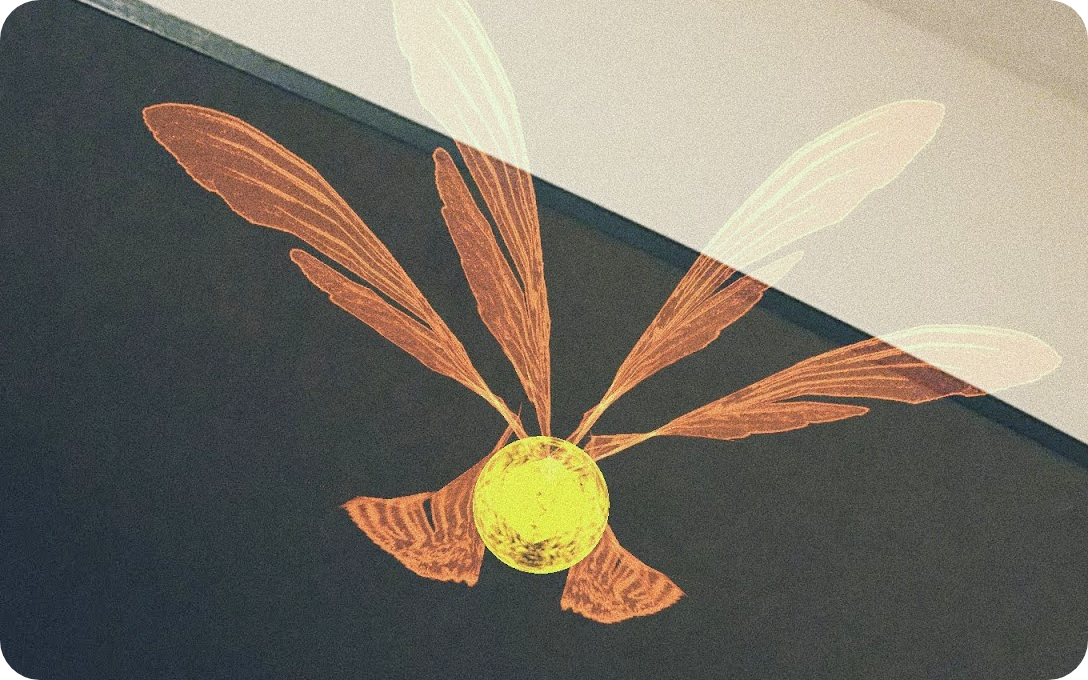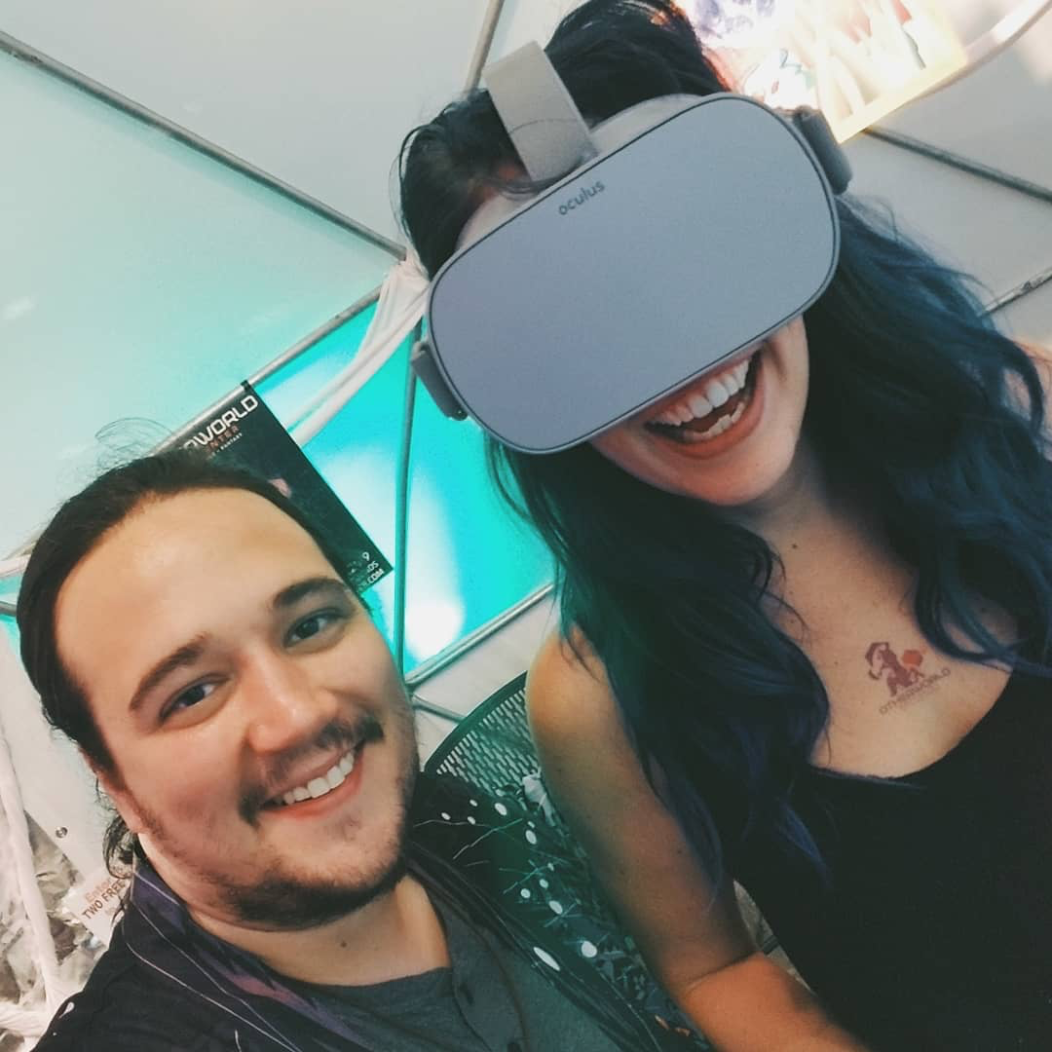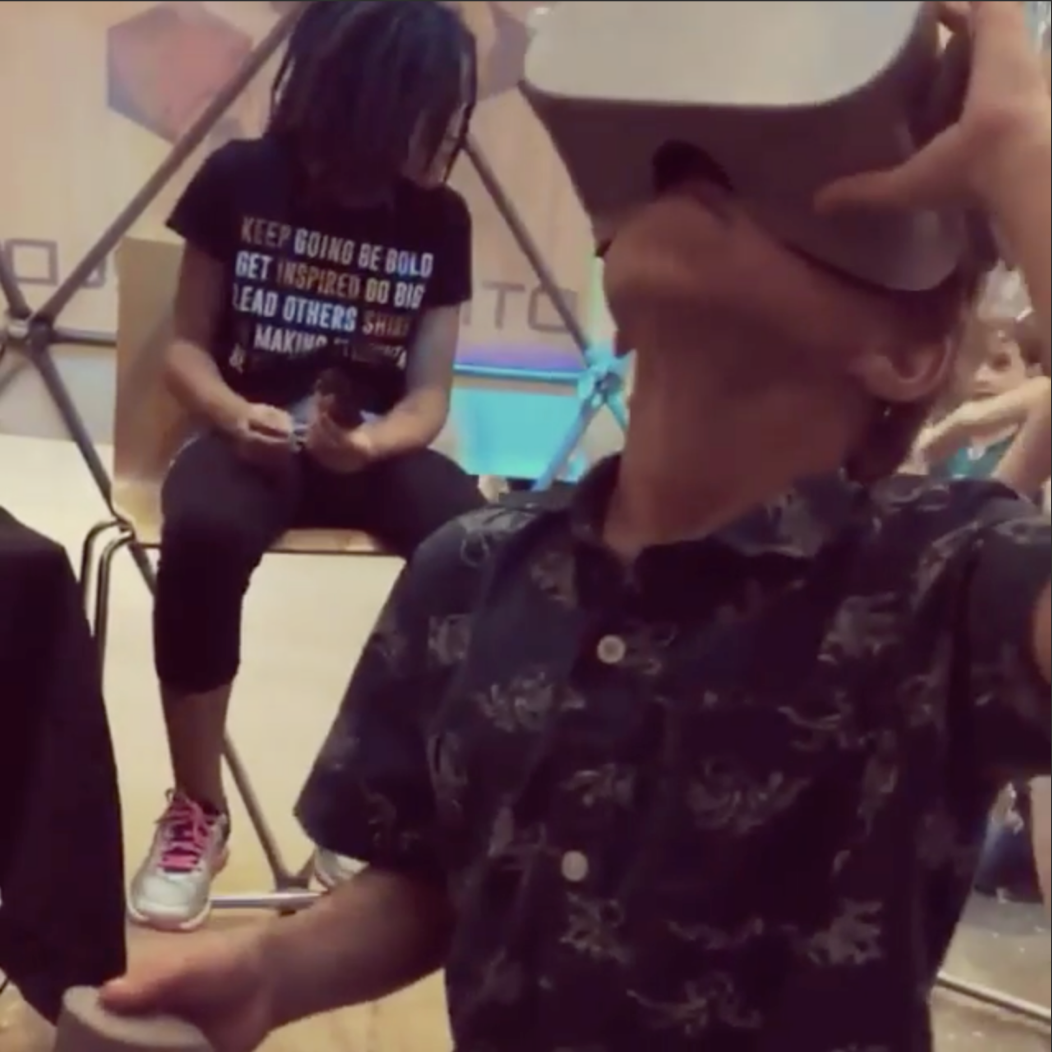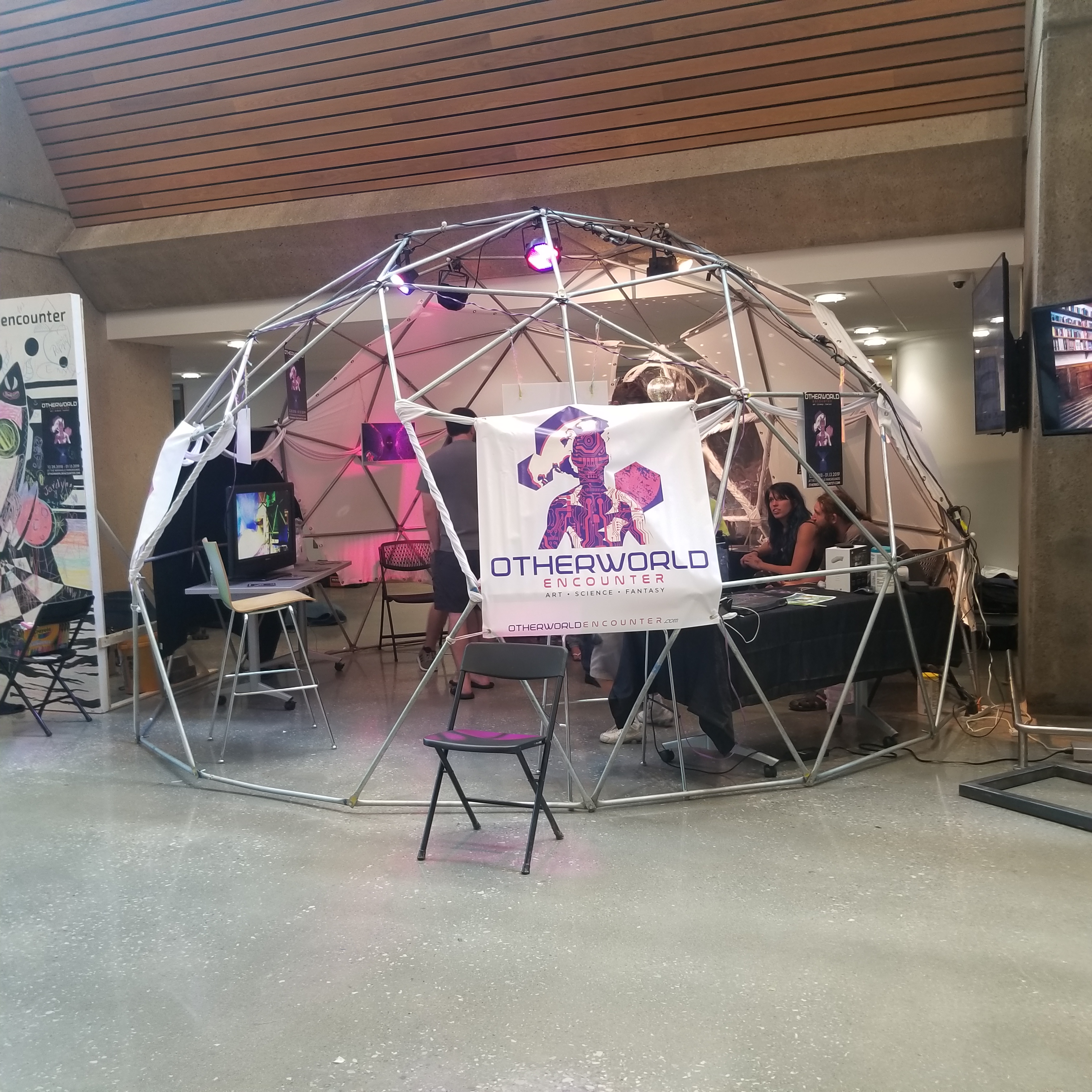Creating an immersive experience for everyone.
Overview
OtherWorld Encounter was an immersive contemporary art experience offering interactive creative tech displays and installations including virtual reality, holograms, and interactive projection mapping, and more.
Role
- Product Management
- UI / UX Design
- AR / VR Engineering

In the summer of 2018 I joined a small collective of artists who sought to bring an immersive art exhibit to Nashville, TN and surrounding regional cities. It was the first endeavor of its kind for nearly everyone involved.
As a member artist, I contributed to many aspects of the exhibit. My primary focus was around a few installations, including an augmented reality mobile application, an interactive virtual reality experience, and a larger-than-life retro-style arcade space shooter.
I researched and experimented with several technologies to create these experiences. Through WebVR and A-Frame, I put together a VR experience for Otherworld’s promotional booth at Nashville’s Maker Faire hosted at Vanderbilt.


While researching which technologies to use, I gained exposure to 3D design and game development principles. A-Frame uses three.js to power its “scenes” and create interactive 3D content in a web browser.
While I was highly interested in the early capabilities of the WebVR spec, my team wanted to be able to leverage native device capabilities of the Oculus Go used in Otherworld’s “secret room”.
Chris Strachan provided the team models and materials to work with, while I focused primarily on game design, production management, and UI. The team used Unity to build “the Dream Machine”, a virtual reality experience where the player used a gun-like device to capture the dreams of Otherworld's "mascot", Circuit Man.
While working on the AR app, I researched and experimented with several tools and frameworks, including a Vuforia package for Unity, 8th Wall (both web and Unity versions), as well as a web library called AR.js
At the end of the day, I wanted people to be able to experience the wonders of AR without having to download an app, so the obvious solution was to roll with a web app. We set up QR codes to be scanned at the entrance of the exhibit, so users could pull up the web app and point their cameras at various "markers" dispersed throughout the exhibit.
When a viewer would point their camera at a marker, they would be greeted with a piece of digital art on top of or adjacent to the marker.

I also had the opportunity to play with tensorflow.js models, such as Posenet, in which my webcam would capture images and the model would detect facial features as well as other key points such as arms, shoulders, wrists, hips, knees, and ankles. When brought together with a library like P5.js, really interesting things can happen, like the interactive physics game you can see in the below gif.

Given the opportunity, I would spend the majority of my free time working on creating interactive experiences like Otherworld had to offer.

